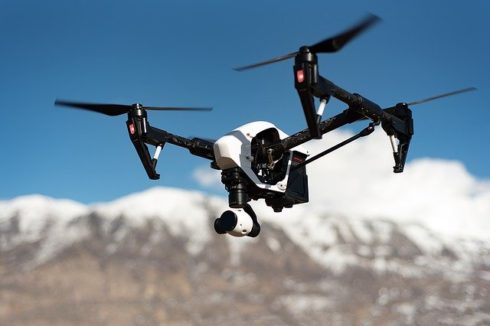
As a roboticist and engineer, one of the growing areas I’m most excited about is the advancement of swarm robotics. I love the idea of taking inspiration from biological systems to enhance what autonomous robots can achieve collectively, and re-contextualizing social animal behaviors like flocking, foraging, and transport to create new possibilities for humanity. From nanomedicine and environmental monitoring to search and rescue and space exploration, there’s no shortage of beneficial applications for swarms.
While robot swarm intelligence might sound intimidatingly high tech, it’s predicated on a very relatable concept. Just as robots within a swarm must operate collaboratively to solve shared problems, human teams need to work together to accomplish common objectives. In my experience working with a multidisciplinary team to commercialize autonomous aerial robots, I’ve learned that you can transpose a number of key principles from robot swarm intelligence to enhance the approach to team leadership.
Organization >> Individual
In the swarm model, the primary intention is to produce meaningful behavior at the group–rather than the individual–level. While the individual robot is capable of operating on its own, it’s also intelligent enough to understand that when the group works together, the whole result becomes greater than the sum of its parts. Take one biological inspiration as an example: starlings. Scientists believe they form flocks primarily for safety because individually, they are quite agile and quick to avoid predators. But by forming a murmuration, they actually increase every individual’s chance of survival by confusing predators, and increase the safety of the group as a whole.
This type of thinking is also true for an organization in which people work together in orchestrated harmony toward a common goal, and prioritize shared success over personal recognition. The challenge is that, if you manage a diverse team like myself, you’ll need to translate these objectives in a way that resonates with everyone. This is the key to cultivating coherence and a teamwork mindset between people from different functions, skill sets, and roles. For example, if you clearly align the technical details of your product with the real-world business requirements and outcomes, you can contextualize the full impact of the work for your technologists and engineers, beyond their individual subject matter areas. This helps synthesize efforts, and can also dissuade informational and cultural silos from forming.
In addition, make it a point to give credit where credit is due. This can go a long way in helping team members feel seen, and acknowledging the value of their hard work and contributions. It also helps take the pressure off of those who may feel like they constantly need to prove themselves to the group.
Structured, efficient, effective communication
One reason swarms are able to achieve unparalleled scalability is by relying primarily on local, robot-to-robot communication to share information, which helps eliminate the dependence on a centralized infrastructure. This is especially useful if you are operating swarms in dangerous or otherwise inaccessible and unfamiliar areas, where you can’t necessarily have a human operator within the same environment to work alongside and monitor the swarm. When the swarm does need to transmit critical information to a remote location (e.g., wherever the humans reside), it can tap special individual members–so-called “gateway” robots–capable of aggregating the local data and then relaying it via global communication.
Understanding how critical information is shared within the swarm and to external sources presents interesting parallels for human teams as well. For example, when is one-to-one communication more effective than one-to-many, and vice versa? And how frequently should these touch points happen? Perhaps specialty groups need to huddle more frequently and less formally, but the whole company would benefit from more structured communications at regular intervals. Perhaps you decide that team leaders should also act as “gateway” communicators in streamlining information flow across the company, and that this affects how you evaluate who is best suited for that role.
Whether robot or human, we all need to identify the specific challenges we each face to efficient and effective communication, and devise ways to overcome them. For robots, these might include technical issues and real-world limitations–things like latency, bandwidth, asynchrony, topological changes, etc. Humans, meanwhile, need to devise a clear plan for unifying information across disparate tools and systems, managing handoffs, and addressing work-culture differences.
Build robustness from the ground up
Another remarkable quality of robot swarms is their robustness. They are designed such that, if any one component were to fail or malfunction, the system can continue performing its tasks as normal. It’s like how the newer Christmas lights have fail protection in their circuitry–if one bulb goes out, the rest of the string keeps shining. In this sense, swarms have built-in safety nets. By distributing and decentralizing the system across multiple units, you reduce the overall risk that something goes wrong.
From a leadership perspective, robustness can be addressed in two key ways: in the development of the technology and in the approach to team culture. On the technology side, for example, we focus on higher quality, modular code with less interdependencies, putting processes in place for continuous assessment and validation, and ensuring aggressive requirements for testing from start to finish. (This is where autonomous robots differ dramatically from other types of software-based tech. You can’t just test in a sandbox or a simulated environment–only real-world field testing will ensure you deliver the best product!)
On the team culture side, we build different kinds of safety nets. We focus on leading with a foundation of trust and respect, and put protocols in place to help affirm a positive work environment. For example, we set mutual expectations among teams or individuals for reaching certain milestones, to encourage a sense of shared responsibility and ownership instead of making people feel like they are being assigned a task list. Both the CEO and myself have standing open-door policies, in which we welcome anyone to approach us and raise concerns or discuss important issues. We have regular team building and team wellness days, where we dedicate time for meaningful, non-work activities to boost well-being and morale. As a recent example, we held a company offsite to hear a former NASA astronaut share his perspective on the value of teamwork in solving seemingly impossible challenges–which we followed up with an escape room exercise. It’s important to us to create a workplace that makes everyone feel included and valued, and helps each team member be at their very best.
As a bonus benefit, these three principles–organizational alignment, effective communication, and robustness–are also what help swarms to be flexible in quickly adapting to unexpected changes in their environment. In the face of unpredictability, uncertainty about the future, and every-evolving needs and requirements, technology-driven businesses need to think about fortifying themselves to weather the storm. Why not take inspiration from technology itself?






